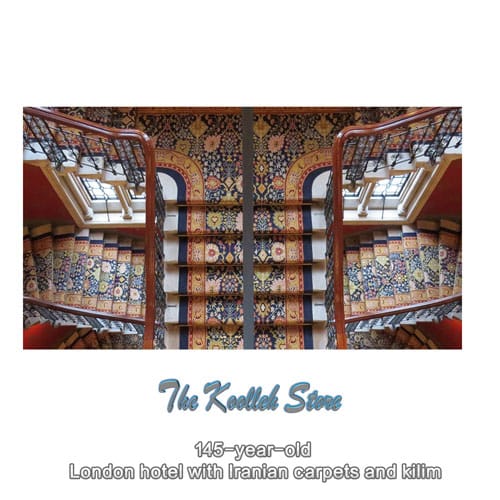145-year-old London hotel with Iranian carpets and kilim

The London Renaissance Hotel is located in front of the St. Petersburg London Railway Station. In 1865, the Midland Railway Company held a competition for the design of a 150-bed hotel for the ongoing St. Petersburg Railway Station, and eventually 11 designers were selected for the final selection, one of whom was George Gilbert Scott, who designed a 300-room hotel. .
Although the cost of the project was much higher than its budget, the Iron Midland Company began construction of the Gilbert Scott Project, and finally the eastern wing of the hotel opened on May 5, 1873, and the entire hotel was completed in 1876.
The hotel was very expensive, and equipping it with large stairs, rooms with gold wallpaper, and a fireplace in each room cost the company a lot of money. So, in 1935, the Icelandic company of Midland and Scotland closed the hotel to save on maintenance costs.
After the closure, the building, formerly known as the Grand Hotel, was renamed St. Paul’s Hall and used as the British Railway Administration. The British Railway hoped to demolish the massive structure soon, but the building was not demolished due to a campaign by the Victorian Association of Historic Preservers. In 1967, the Hotel and Station of the Bridge of Tradition, the Pancras, were listed as historic and important. Received the rank of “1st degree”.
In the 1990s, the exterior of the building was renovated at a cost of about 10 million, and in 2004 a plan was made to turn it into a hotel. Thus, the new part of the hotel with 244 rooms, 2 restaurants and 2 cafeterias, a health and leisure center and 20 conference and conference rooms reopened on March 14, 2011 and the old part on May 5 of that year exactly 138 years after the opening of the main hotel. Founded in 1873, it reopened.
In the new design of this hotel, carpets and rugs of Iranian design have been used, so that the main staircase of St. Petersburg Renaissance Hotel London is covered with Iranian ceremonial carpets and the corridors and rooms of the eastern wing are decorated with rugs and carpets of Kashan and Tabriz design.






